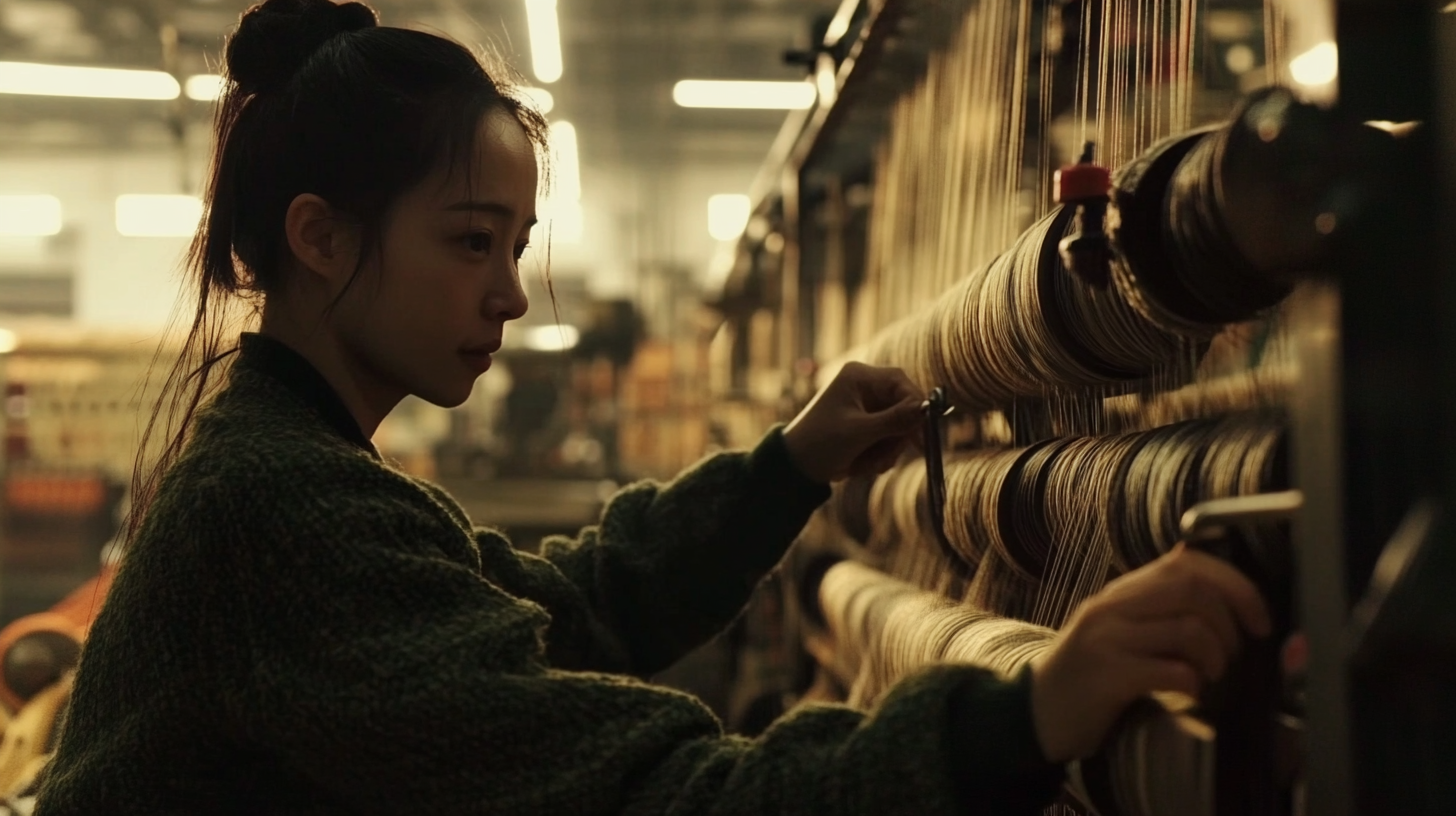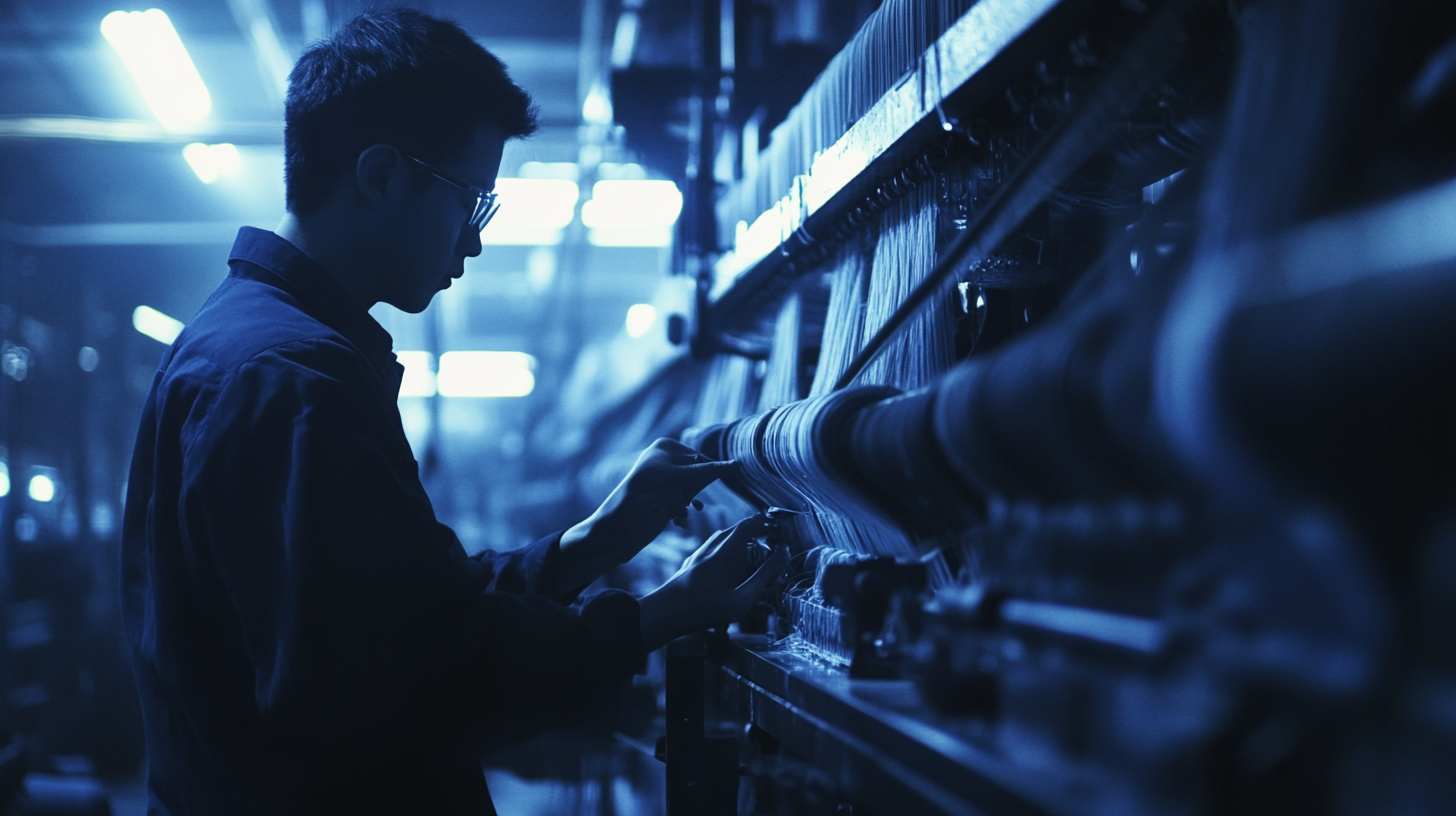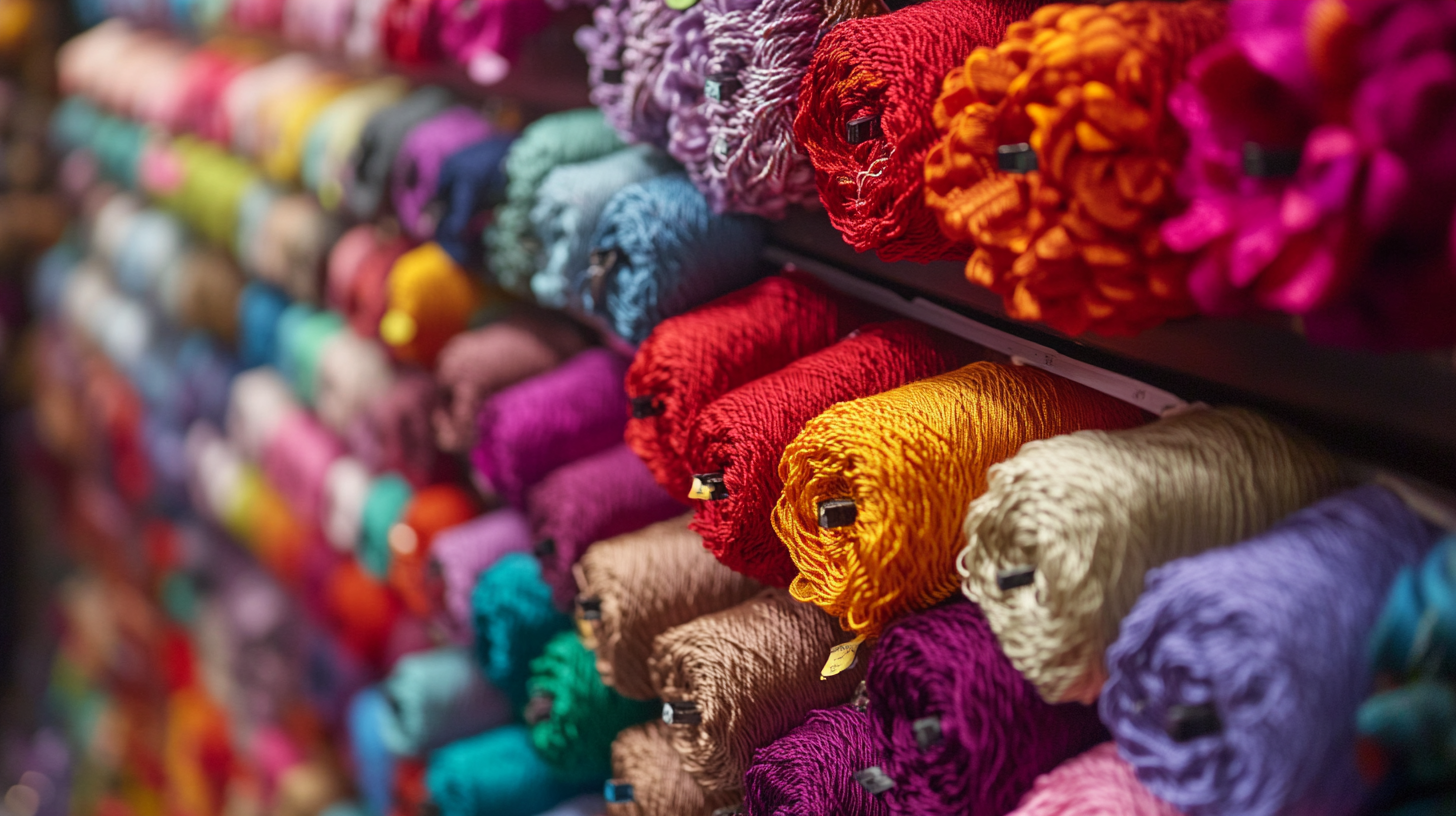Leave Your Message
In an era marked by escalating trade tensions and rising tariffs between the United States and China, one would expect the manufacturing sector to experience significant setbacks. However, amidst these challenges, the Chinese textile industry, particularly the production of Textile Bobbin Machines, demonstrates remarkable resilience and adaptability. This blog will explore how these essential machines not only withstand the pressures of tariffs but also continue to thrive in the global market. With innovative technologies and a commitment to quality, Chinese manufacturers are enhancing their competitiveness, turning potential obstacles into opportunities for growth. By analyzing the strategic responses of these companies, we aim to uncover the secrets behind their success in navigating a complex economic landscape, positioning themselves as leaders in the textile machinery sector despite the odds.

The ongoing US-China trade tensions have significantly impacted the textile industry, where tariffs have reshaped market dynamics and supply chains. According to a report from the American Apparel and Footwear Association, tariffs on textiles and apparel can reach up to 25%, adding substantial costs to imports from China, which has long been the largest supplier to the US market. This price increase forces manufacturers to reevaluate their sourcing strategies to maintain competitiveness, often leading them to seek alternatives in regions like Southeast Asia.
Despite these challenges, Chinese manufacturers of textile machinery, particularly bobbin machines, have shown remarkable resilience. In recent years, they have adapted by enhancing automation and improving production efficiency. A report from Market Research Future states that the global textile machinery market is expected to grow at a CAGR of 4.5% from 2021 to 2026, driven by advancements in technology and the increasing demand for sustainable practices. As US tariffs challenge traditional supply chains, China's best bobbin machine producers have not only thrived by innovating and optimizing their production processes but also by positioning themselves as vital partners to address the evolving needs of the textile industry.

The textile industry in China is navigating a turbulent landscape shaped by U.S.-China tariff challenges. Chinese textile bobbin manufacturers must adopt strategic approaches to maintain their competitive edge. One way to achieve this is through embracing innovation. By investing in advanced machinery and sustainable practices, manufacturers can ensure their products meet global standards while reducing dependency on traditional methods.
Tips: Focus on research and development to create specialized bobbin machines that enhance efficiency and reduce production costs. Collaborate with local universities to foster new technologies that align with environmental regulations, addressing both compliance and consumer demand for sustainability.
Another vital strategy is optimizing supply chains. With increasing pressures from ASEAN and global competitors, establishing robust logistics networks will be essential for Chinese manufacturers. This includes diversifying suppliers and exploring partnerships within the region to mitigate risks associated with trade tensions.
Tips: Regularly assess the supply chain for vulnerabilities and invest in technologies that enhance transparency and communication. Consider relocating some production processes to other Southeast Asian countries to leverage cost advantages and reduce potential impacts from tariffs.
In the face of the US-China tariff challenges, the textile industry in China has demonstrated remarkable resilience, largely driven by innovation and advanced technology. Chinese manufacturers are not merely adapting to the pressures of tariffs but are proactively investing in cutting-edge technologies to enhance their production capabilities. Such investments include automation, artificial intelligence, and smart manufacturing systems, enabling companies to optimize their operations and improve efficiency. This technological leap not only mitigates the adverse impacts of tariffs but also positions Chinese textile bobbin machines as leaders in the global market.
Moreover, the integration of innovative practices has transformed the traditional manufacturing landscape in China. Businesses are embracing R&D initiatives to develop superior bobbin machines that offer enhanced functionality, durability, and eco-friendliness. By leveraging data analytics and IoT, manufacturers are gaining real-time insights that enable them to respond swiftly to market demands. This synergy of innovation and technology not only facilitates resilience amidst challenges but also paves the way for sustainable growth, ensuring that Chinese textile machinery continues to thrive and remain competitive on the global stage.
| Machine Model | Efficiency (Bobbins/Hour) | Cost (USD) | Market Share (%) | Innovation Features |
|---|---|---|---|---|
| XJ-1000 | 200 | 1500 | 25 | Automatic tension control, Energy-efficient design |
| ZT-2000 | 250 | 1800 | 30 | Smart sensors, High-speed operation |
| YT-3000 | 300 | 2000 | 20 | AI integration, Remote monitoring |
| WS-4000 | 350 | 2200 | 15 | User-friendly interface, Quick changeover |
China's textile bobbin machine manufacturers have showcased remarkable resilience amidst the ongoing US-China tariff challenges. Despite facing increased tariffs, many Chinese producers have not only maintained their market presence but have also gained a competitive edge. According to a recent report by Mordor Intelligence, the market for textile machinery in China is projected to grow by 5.6% annually, driven by innovations in efficiency and sustainability. Companies such as Shima Seiki and Donghua Machinery have adopted advanced technologies to enhance their product offerings, ensuring they remain at the forefront of the industry.
**Tip:** To thrive in a competitive landscape, textile manufacturers should focus on integrating smart technology into their production lines. Automation and AI-driven solutions not only improve efficiency but also help in meeting the stringent demands for quality and sustainability. By embracing these innovations, companies can better position themselves against international competitors.
Furthermore, some Chinese bobbin machine producers have successfully pivoted their strategies by exploring new markets while strengthening their domestic sales. For instance, they have expanded their export routes and built strategic partnerships with foreign firms to bypass challenges posed by tariffs. This proactive approach has not only mitigated risks but also opened new avenues for growth.
**Tip:** Diversifying market reach can serve as a buffer against geopolitical uncertainties. Companies should consider establishing partnerships with regional distributors and investing in market research to identify emerging opportunities in other countries, thereby reducing dependency on any single market.
In the face of evolving global trade dynamics, the Chinese textile industry has shown remarkable resilience, particularly in the production of bobbin machines. With the ongoing US-China tariff challenges, manufacturers in China have been forced to innovate and adapt, finding new markets and improving their technological capabilities. This adaptability not only underscores the importance of strategic planning in business operations but also highlights how agility can serve as a critical factor for sustainable growth in a fluctuating trade environment.
Looking ahead, the future for China's textile bobbin machine manufacturers seems promising, provided they continue to navigate the complexities of global trade with a proactive approach. Establishing partnerships beyond traditional markets and investing in sustainable practices will be vital in enhancing their competitive edge. Furthermore, leveraging advancements in automation and digitalization can optimize production processes, ensuring that these manufacturers remain at the forefront of the industry while effectively combating the challenges posed by tariffs and geopolitical tensions. Through such measures, they can secure their position in the global market, fostering innovation and sustainability for continued success.

